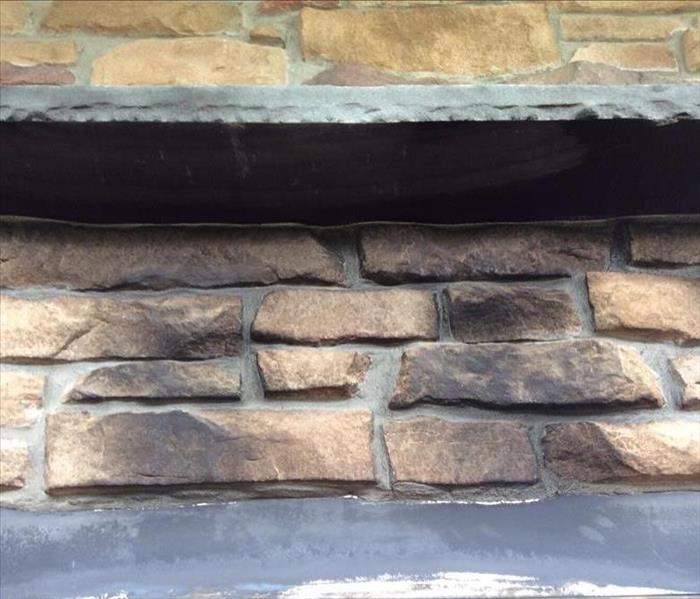Are You Actively Preventing a Furnace Puffback?
11/28/2018 (Permalink)
 After an unexpected puffback, this fireplace was left covered in soot. Check out our Before and After Page to see what is looks like now!
After an unexpected puffback, this fireplace was left covered in soot. Check out our Before and After Page to see what is looks like now!
In the favorite childhood movie, Mary Poppins, while walking along the rooftop, Michael looks into a roof vent and ends up with a face full of soot. Limited to a rooftop in fictional London, this surprise puff is comical and harmless. However, when your fireplace or furnace creates a puff of soot inside your home, often called a puffback, suddenly it creates a very real, very sooty problem.
When a puffback occurs, it’s hard to ignore. It can be loud, with a distinctive wuff sound and the resulting soot and oily residue covers every surface it can reach. It’s a frustrating experience and we most often see them happening around this time of year when fireplaces, furnaces and woodburning stoves are used for the first time after sitting dormant all summer.
In a fireplace or woodstove with a chimney, a puffback is most often caused by a problem in the chimney. For example, if there is a buildup of ash and leftover residue clumped in the chimney, this blockage can create an uneven balance of oxygen and carbon dioxide. As you add kindling and wood, the flame has plenty of fuel, but the oxygen it needs to burn is stuck above the chimney blockage. The fire will eventually correct this imbalance by sucking in a large amount of oxygen all at once, igniting the excess fuel in the fireplace and the buildup in the chimney all at once. The force of this ignition pushes ash and soot out of the fireplace and can cover the whole room in a dark residue.
In a furnace, the cause can be similar, a furnace can have a buildup of excess fuel, oil, even dirt or dust in the ignition chamber. This buildup blocks oxygen from reaching the combustion chamber and can be ignited in the same way a chimney buildup can. Therefore, when the ignition flame in a furnace pulls in the rush of oxygen it needs to burn, the resulting powerful expulsion of soot and oil can come out of the vents of the furnace.
As messy and unpleasant as this occurrence is, it is thankfully easily prevented. Routine chimney and furnace maintenance can usually prevent a puffback before they happen.






 24/7 Emergency Service
24/7 Emergency Service